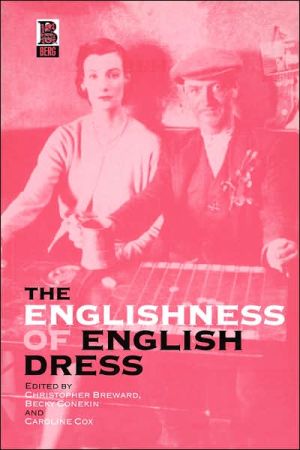

 |

|

The average rating for The Englishness Of English Dress based on 2 reviews is 4.5 stars.
Review # 1 was written on 2015-02-18 00:00:00 Homer Alexander Homer AlexanderGenre: Fashion/History/Medieval Lit This book wasn't what I thought it would be. There are a lot of interesting bits in it, but it all seemed rather disconnected. I don't know if I just don't know the field of Medieval Lit well enough to grasp what the author was arguing about, or if the problem was in the book itself. The author flits around discussing many different ways in which specialized fashion is used by medieval elites to define (and redefine) themselves. This is based on the premise that for medieval people individual identity is located in the social sphere - how you present yourself to others and how they think and treat you is the key factor of your identity. Whereas for modern people our interior thoughts and feelings are the key factor in our individual identities. (Personally, I think I lean more towards the medieval definition of identity then the modern one... :-S). If the locus of your identity is social, then social markers (such as fashion) play a critical role in creating/presenting your identity. Some factors discussed: 1) The use of individual color-symbol-motto trios as personal identifiers to decorate clothes, stuff, and associates. The description reads rather like how devices are used in the SCA. There is a long section on the exchange of various personal symbols by the King of France and the King of England as the pivotal public event to realign their contentious relations (which was part of why the daughter of the King of France married the King of England and this was part of those ceremonies). 2) The use/adoption of mythical ancestors as part of a family device, supporters, tournament gear, etc. The use of their symbols incorporates their virtues into the identity of the individual using the symbols, just like the use of more mundane ancestor's symbols adds their renown to their descendant. 3) Joan of Arc's use of men's clothes as a critical part of her identity as God's champion in her (multiple) inquisitorial trials, and how those clothes are equally what condemn her. 4) The symbology of clothes in the Maying festivities which celebrate both spring, and (un-intuitively) sexuality constrained by proper behavior. This chapter analyzes one of the images from La Belle Heures and points out the symbolism of things I'd never been able to figure out before. Quite useful when desiring to recreate those dresses ;-)) 5) The use of disguise in tournaments to accrue renown separate from what is already known about one. 6) The use of disguise in intervals and chivarii to both allow the elite person expanded license and to present the idea that while this is a facet of their personality they have it under civilized control. The argument here was hard to follow. It reminds me a bit of courtly masques of the 16th century, and how this intersected with the presentation of self, I'm not quite sure. The thread that draws all these separate discussions together is rather tenuous, imo, while each is very interesting in it's own right. If you're reading this for information on what people wore and what they were saying about themselves by their choices - there's actually very little here, the discussion is almost entirely limited to these special cases. |
Review # 2 was written on 2017-02-17 00:00:00 Robert Waters Robert WatersA great reference book on medieval identity formation... |
CAN'T FIND WHAT YOU'RE LOOKING FOR? CLICK HERE!!!